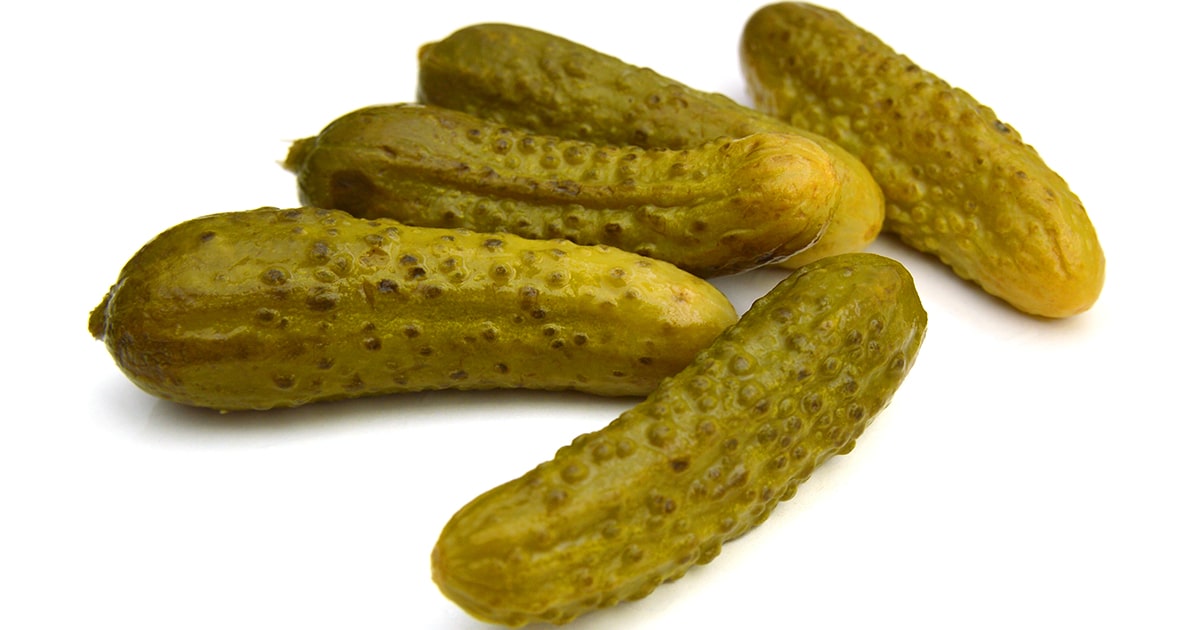
What exactly is a gherkin? A gherkin is a small, crunchy cucumber often pickled in vinegar or brine. These tiny cucumbers are usually harvested when they are about 1 to 3 inches long. Gherkins are popular in many cuisines around the world, adding a tangy crunch to sandwiches, salads, and charcuterie boards. They are not just any cucumber; they belong to a specific variety known for their bumpy skin and firm texture. Whether you enjoy them as a snack or a condiment, gherkins bring a burst of flavor to any dish. Ready to learn more about these zesty little veggies? Let's dive in!
Key Takeaways:
- Gherkins are small, crunchy pickles that are actually a type of cucumber, and they offer low-calorie snacking and essential vitamins A and K for good health.
- Gherkins are not just tasty snacks; they are also used in popular dishes like sandwiches and tartar sauce, and even have their own festivals and skyscraper named after them!
What is a Gherkin?
Gherkins, often mistaken for cucumbers, are small, crunchy pickles. These tangy treats have a rich history and unique characteristics that set them apart from other pickled vegetables. Let's dive into some fascinating facts about gherkins.
-
Gherkins are a type of cucumber. They belong to the same family as cucumbers but are harvested when young and small.
-
Originated in India. Gherkins have been cultivated in India for thousands of years before spreading to other parts of the world.
-
Different from pickles. While all gherkins are pickles, not all pickles are gherkins. Gherkins are specifically small cucumbers pickled in vinegar or brine.
How Gherkins are Made
The process of making gherkins involves several steps, each contributing to their unique flavor and texture.
-
Harvested early. Gherkins are picked when they are about 1-3 inches long, ensuring they remain crunchy.
-
Soaked in brine. After harvesting, they are soaked in a saltwater solution to draw out excess moisture.
-
Pickled in vinegar. The brined gherkins are then immersed in vinegar, often with added spices like dill, garlic, or mustard seeds.
Nutritional Benefits of Gherkins
Gherkins are not just tasty; they also offer several health benefits.
-
Low in calories. A serving of gherkins contains very few calories, making them a great snack for those watching their weight.
-
Rich in vitamins. They are a good source of vitamins A and K, which are essential for vision and blood clotting.
-
Probiotic properties. Fermented gherkins contain beneficial bacteria that can aid digestion.
Gherkins in Cuisine
Gherkins are used in various dishes around the world, adding a tangy crunch to meals.
-
Popular in sandwiches. They are often added to sandwiches and burgers for an extra burst of flavor.
-
Essential in tartar sauce. Chopped gherkins are a key ingredient in tartar sauce, commonly served with fish.
-
Used in salads. Gherkins can be diced and added to potato salads, coleslaw, and other cold dishes.
Fun Facts About Gherkins
These little pickles have some surprising and fun facts associated with them.
-
Gherkin is also a building. The Gherkin is a famous skyscraper in London, named for its resemblance to the pickle.
-
World's largest gherkin. The largest gherkin ever recorded weighed over 10 pounds and was grown in Germany.
-
Pickle juice benefits. The brine from gherkins can be used to relieve muscle cramps and even as a hangover cure.
Gherkins in Pop Culture
Gherkins have made their mark in various aspects of pop culture.
-
Featured in cartoons. Gherkins have appeared in several animated shows, often as a quirky snack.
-
Gherkin festivals. Some towns host annual gherkin festivals, celebrating the pickle with contests and tastings.
-
Pickle-flavored snacks. Gherkin-flavored chips and popcorn have become popular novelty snacks.
Growing Your Own Gherkins
Interested in growing your own gherkins? Here are some tips.
The Final Bite on Gherkins
Gherkins, those small but mighty cucumbers, pack a punch in both flavor and history. Originating from India, they’ve traveled far and wide to become a staple in many kitchens. Whether you enjoy them pickled, fresh, or as a crunchy snack, gherkins offer a unique taste that’s hard to beat. They’re not just tasty; they’re also packed with nutrients like vitamin K and antioxidants. From ancient times to modern-day cuisine, gherkins have proven their versatility and staying power. So next time you bite into one, remember you’re enjoying a piece of history that’s been cherished for centuries. Whether in a sandwich, salad, or straight from the jar, gherkins continue to delight taste buds around the world. Enjoy the crunch and savor the flavor of these tiny green wonders.
Frequently Asked Questions
Was this page helpful?
Our commitment to delivering trustworthy and engaging content is at the heart of what we do. Each fact on our site is contributed by real users like you, bringing a wealth of diverse insights and information. To ensure the highest standards of accuracy and reliability, our dedicated editors meticulously review each submission. This process guarantees that the facts we share are not only fascinating but also credible. Trust in our commitment to quality and authenticity as you explore and learn with us.


